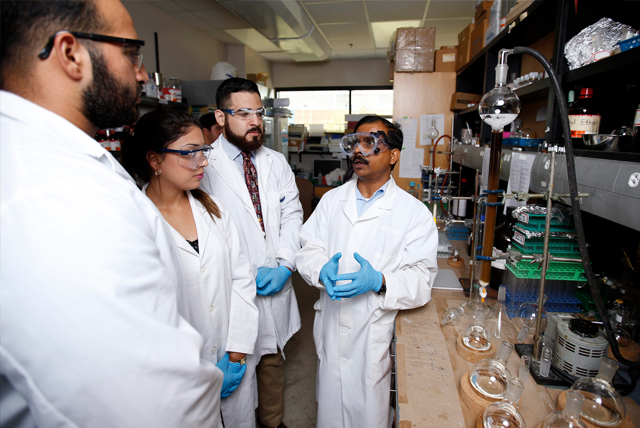Document Type
Article
Publication Date
1-2020
Abstract
Highlights
-
Viscosity of TiO2 nanofluid at variable physical parameters has been reviewed.
-
Classical and experimental viscosity models of nanofluids have been discussed.
-
Preparation techniques of TiO2 nanofluid have been discussed.
-
Viscosity of TiO2 nanofluid can increase by 329 times compared to the base fluid.
-
Viscosity of TiO2 nanofluid decreases significantly with increasing temperature.
Abstract
Nanofluids have garnered significant attention in the scientific and engineering research communities due to their enhanced heat transfer properties when compared to conventional thermal fluids. Nanofluids comprised of titanium dioxide (TiO2) nanoparticles have a wide range of applications due to their excellent thermophysical properties like thermal conductivity and viscosity, environmentally friendly nature, and low cost. This article reviews major research advances in homogeneous water (H2O) and ethylene glycol (EG, HO(CH2)2OH) based TiO2 nanofluids compared to hybrid TiO2 nanofluids. This review focuses on viscosity measurements and rheological behavior of the aforementioned nanofluids at various temperatures and TiO2 particle concentrations. Additionally, the effect of sonication time, particle size, and base fluid mixture on the viscosity of TiO2 nanofluids are included in this study. The classical and experimental models of viscosity have been reviewed as well. Furthermore, nanofluid preparation methods, characterization, and measurement techniques are examined and discussed. Previous studies clearly show that the viscosity of TiO2 nanofluids is a noteworthy function of both temperature and nanoparticle concentration. Viscosity is observed to significantly increase with particle concentration and decrease with temperature. Nanofluids are also observed to exhibit dissimilar rheological behavior under different experimental conditions. Additionally, increases in viscosity are also discussed with respect to the chosen nanofluid base liquid. The hybridization of TiO2 nanofluids, as well as combinations of ethylene glycol and water, have shown substantial effects on the viscosity of nanofluids. These results provide important characteristics that should be considered during various engineering applications of TiO2 nanofluids.
Recommended Citation
Abdullah, Abu Musa, Aminur Rashid Chowdhury, Yingchen Yang, Horacio Vasquez, H. Justin Moore, Jason G. Parsons, Karen Lozano, Jose J. Gutierrez, Karen S. Martirosyan, and M. Jasim Uddin. "Tailoring the viscosity of water and ethylene glycol based TiO2 nanofluids." Journal of Molecular Liquids 297 (2020): 111982. https://doi.org/10.1016/j.molliq.2019.111982
Creative Commons License

This work is licensed under a Creative Commons Attribution-NonCommercial-No Derivative Works 4.0 International License.
Publication Title
Journal of Molecular Liquids
DOI
10.1016/j.molliq.2019.11198



Comments
Original published version available at https://doi.org/10.1016/j.molliq.2019.111982